My Lemon Curd Cake is a simple, easily made cake, which is certain to become one of your favourites. It has a sweet, crispy crust that perfectly contrasts, yet complements, the luscious richness of the creamy lemon curd filling. I don’t know many people who could resist that combination of flavour and texture! Enjoy it on its own, or with some whipped cream for dessert. This delicious tea cake can also be made gluten-free.
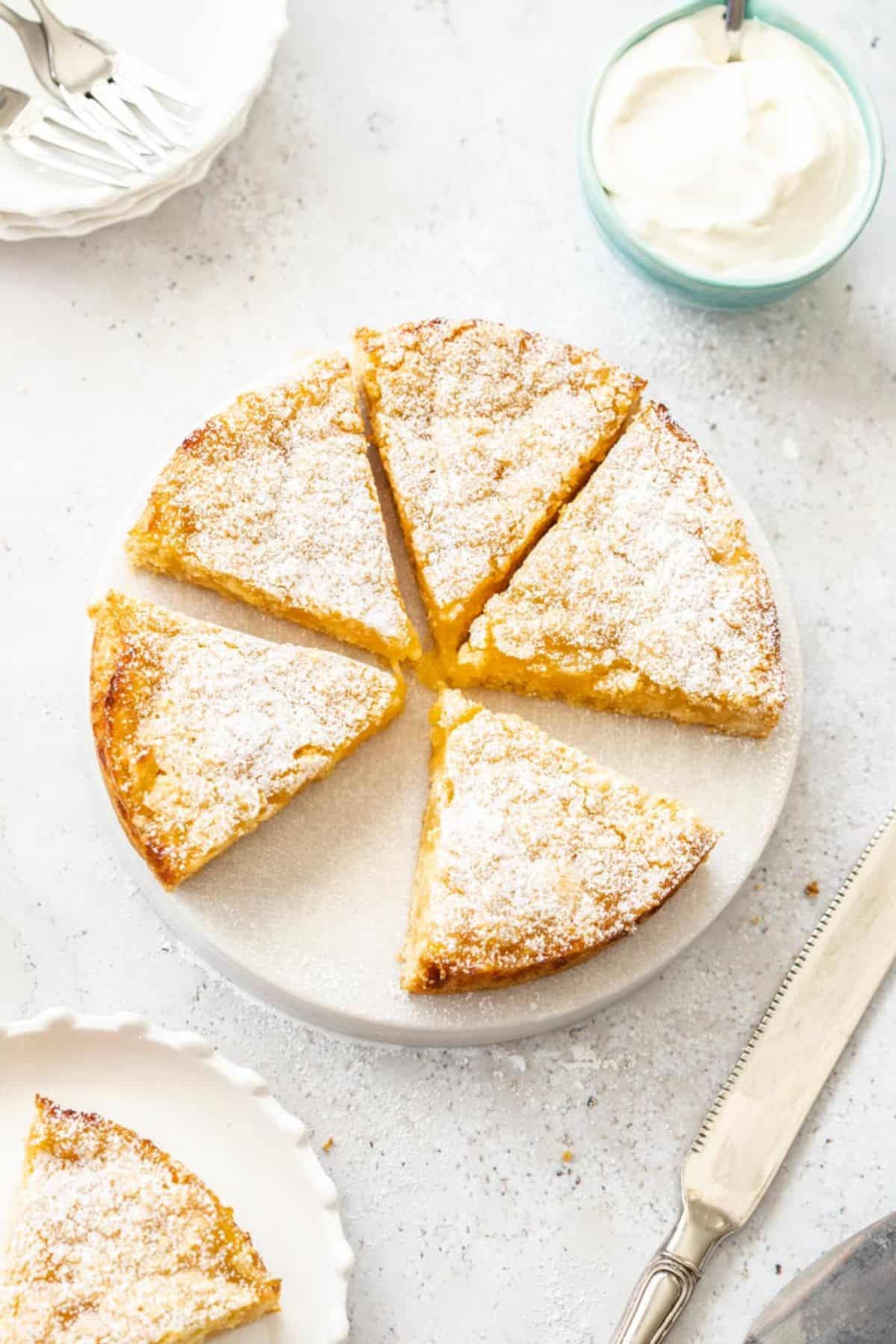
You will love this Lemon Curd Cake because:
- It can be made with either gluten-free or regular flour. We nearly always make it with gluten-free flour, which makes it suitable for people with specific dietary requirements.
- It is so simple – it looks impressive, but it couldn’t be easier to prepare.
- The base of the cake and the crumble-like topping is made from the same mixture – we use two-thirds for the base and crumble the remainder on top.
- It has a sweet, crispy crust, perfectly offset by the luscious richness of the tangy lemon curd filling.
- The creamy, lemon curd filling has a bright, vibrant flavour and is easy to make. You don’t need any special equipment; you make it directly in a saucepan, not in a double boiler.
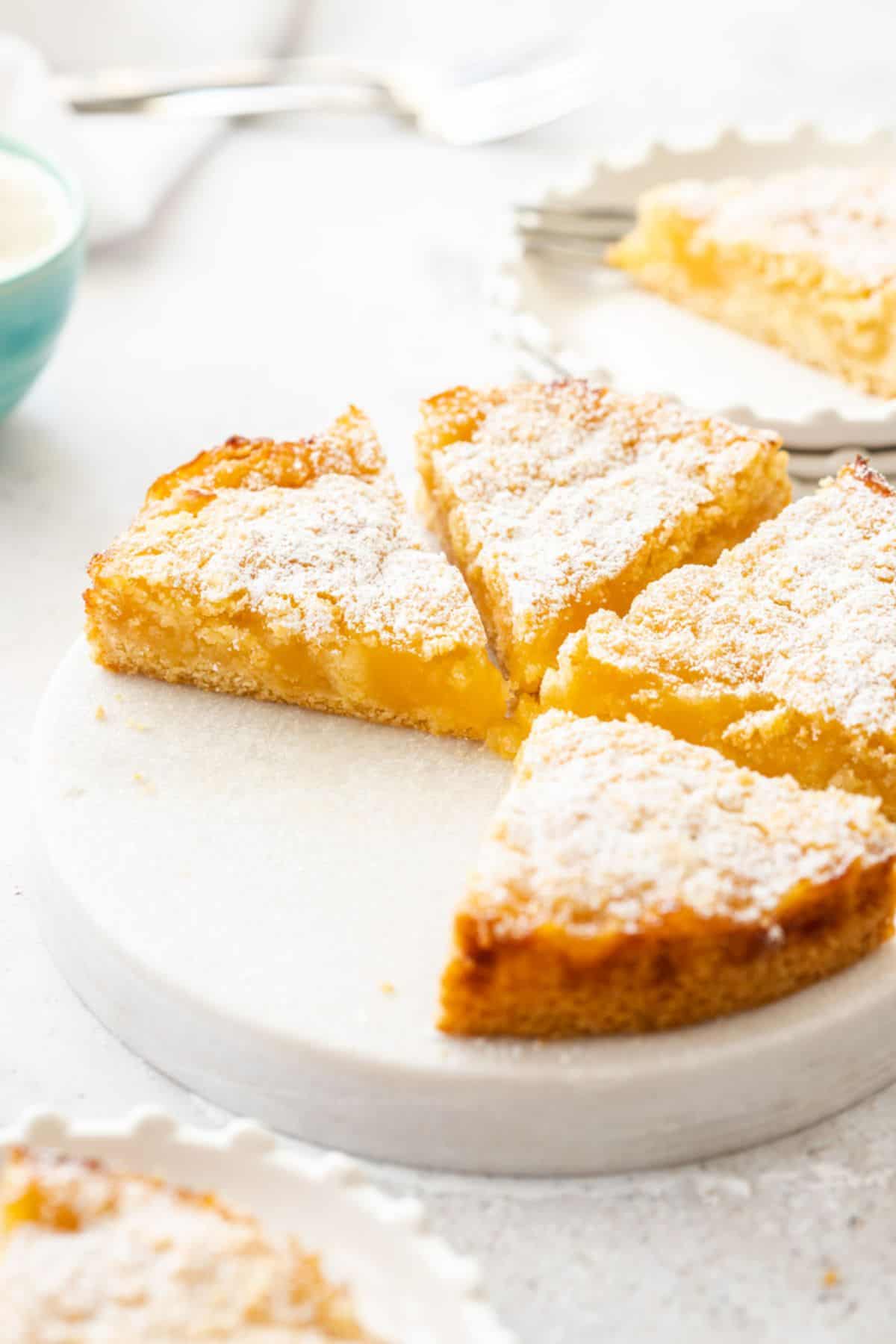
Ingredients in this recipe:
Please see the recipe card further along in the post for exact quantities of ingredients and the full method.
Gluten-free all-purpose/plain flour – I have used a commercial gluten-free flour which is made from a blend of naturally occurring gluten-free flours. Our gluten-free flour blends contain either xanthan or guar gum to stabilise and provide structure to our recipes. However, all gluten-free flours are not equal. You may need to try one or two brands before settling on one you prefer.
Baking powder – if necessary, ensure it is gluten-free.
Caster/superfine sugar – it dissolves more readily than regular granular, but you can use granular if that’s what you have.
Butter – adds rich flavour, assists in raising and adds moisture, making baked goods tender.
Eggs – the protein content of eggs assists in binding together baked goods, thereby adding strength and structure.
Lemon juice – for the best flavour, we use freshly squeezed lemon juice. We have made this recipe with both Meyer and Eureka lemons – they both work well.
Icing/powdered sugar – perfect to dust the cake. If you find that you don’t have any icing/powdered sugar, you can make your own. Place granulated sugar in a blender and pulse until it’s a fine powder.
How to make a Lemon Curd Cake:
Please see the recipe card further along in the post for exact quantities of ingredients and the full method.
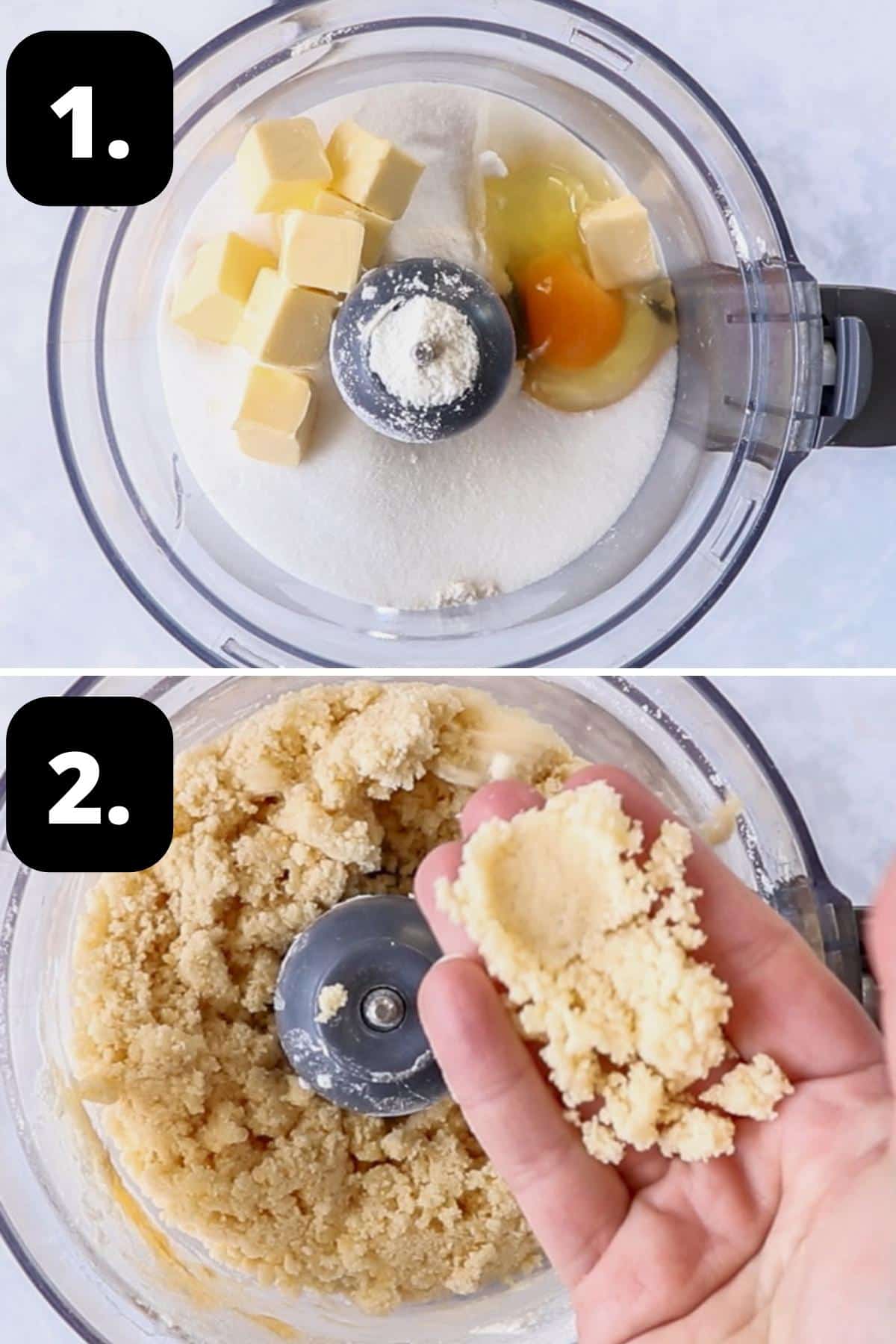
1 – Prepare the tea cake mixture in a food processor:
Add all the cake ingredients to the bowl of a food processor and whiz until the mixture just begins to come together.
2 – The cake mixture:
The cake mixture is more like a pastry; it is not pourable as a traditional cake batter would be.
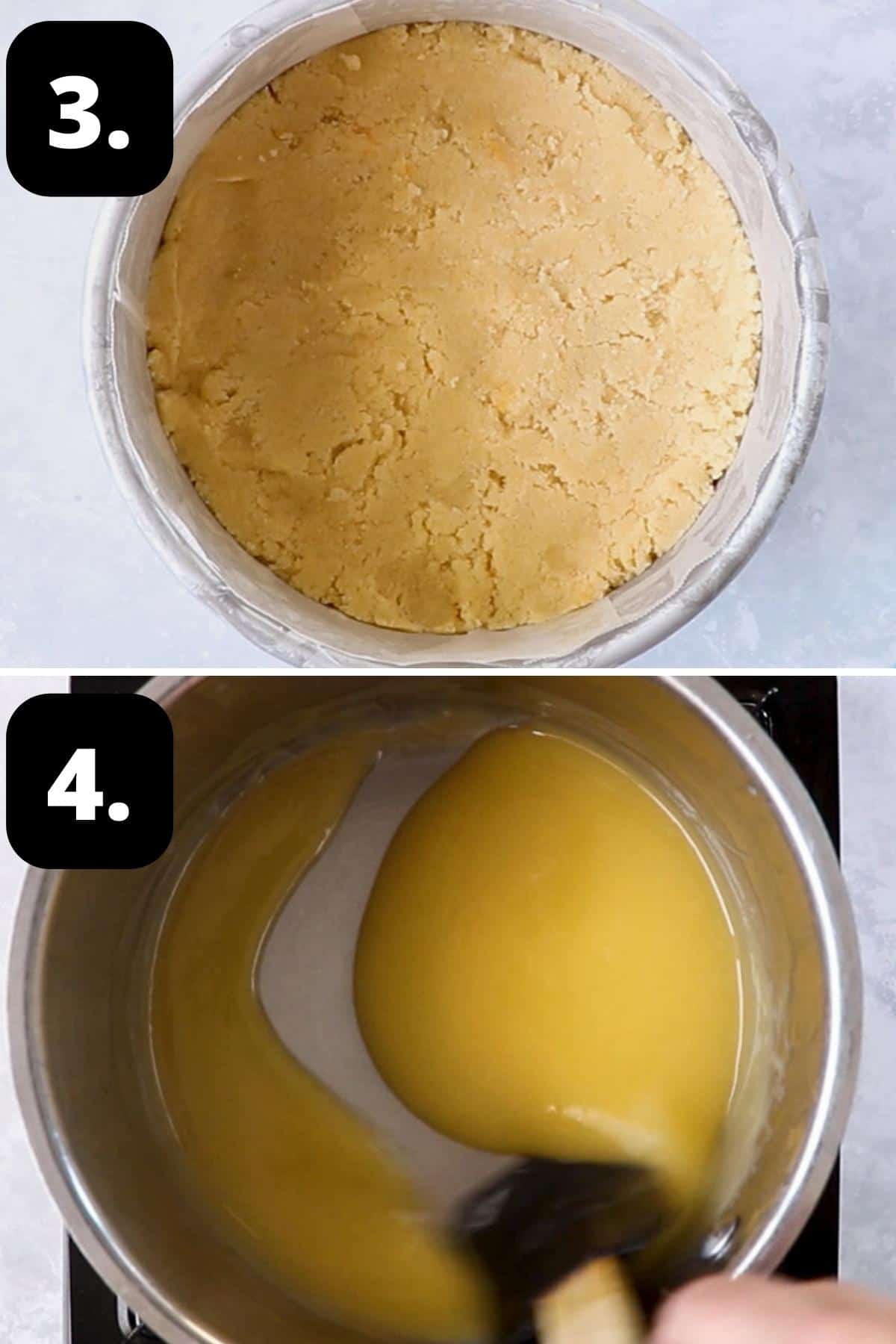
3 – Put the base of the cake into the tin:
Gently press two-thirds of the cake mixture into the base of a greased and lined spring-form tin.
4 – Make the Lemon Curd:
Add all the curd ingredients to a medium-sized saucepan, then stir them together over low heat until the butter has melted, and the mixture begins to thicken.

5 – Top the base with the curd:
Pour the hot curd over the base.
6 – Crumble over the topping:
Crumble the remaining cake mixture over the top of the lemon filling. It may not look like you have enough, but it will spread when it cooks.
Tips for success and FAQs:
This delicious Gluten-Free Lemon Tea Cake is perfect for any occasion but is especially wonderful to make when you have an abundance of lemons.
When I have a plentiful supply of lemons I like to freeze the juice in ice cube trays. When frozen, I transfer the cubes to a zip-lock bag or an airtight container which is suitable for the freezer. The juice can be frozen for up to six months but will retain the best flavour for up to four months. I then have a supply of juice to use when lemons are not so readily available.
This cake uses just the juice of the lemon, but if you’d like to use the zest for something else, for ease, zest the lemon prior to juicing.
Like most baked items, the Lemon Curd Cake is at its best on the day that it is made. However, it will still be delicious over the next two days.
Store it in an airtight container in the fridge for up to 3 days.
Yes, it can. Once baked, allow it to cool completely, and then wrap it twice in clingfilm to ensure it doesn’t suffer from freezer burn. The cake can be frozen for up to 2 months. Defrost it in the refrigerator.
Yes, you can. You must cook it slowly until just below boiling point. If you try to cook it too quickly, or cook it too long, you may end up with lumpy, lemon flavoured scrambled eggs instead of smooth and creamy curd.
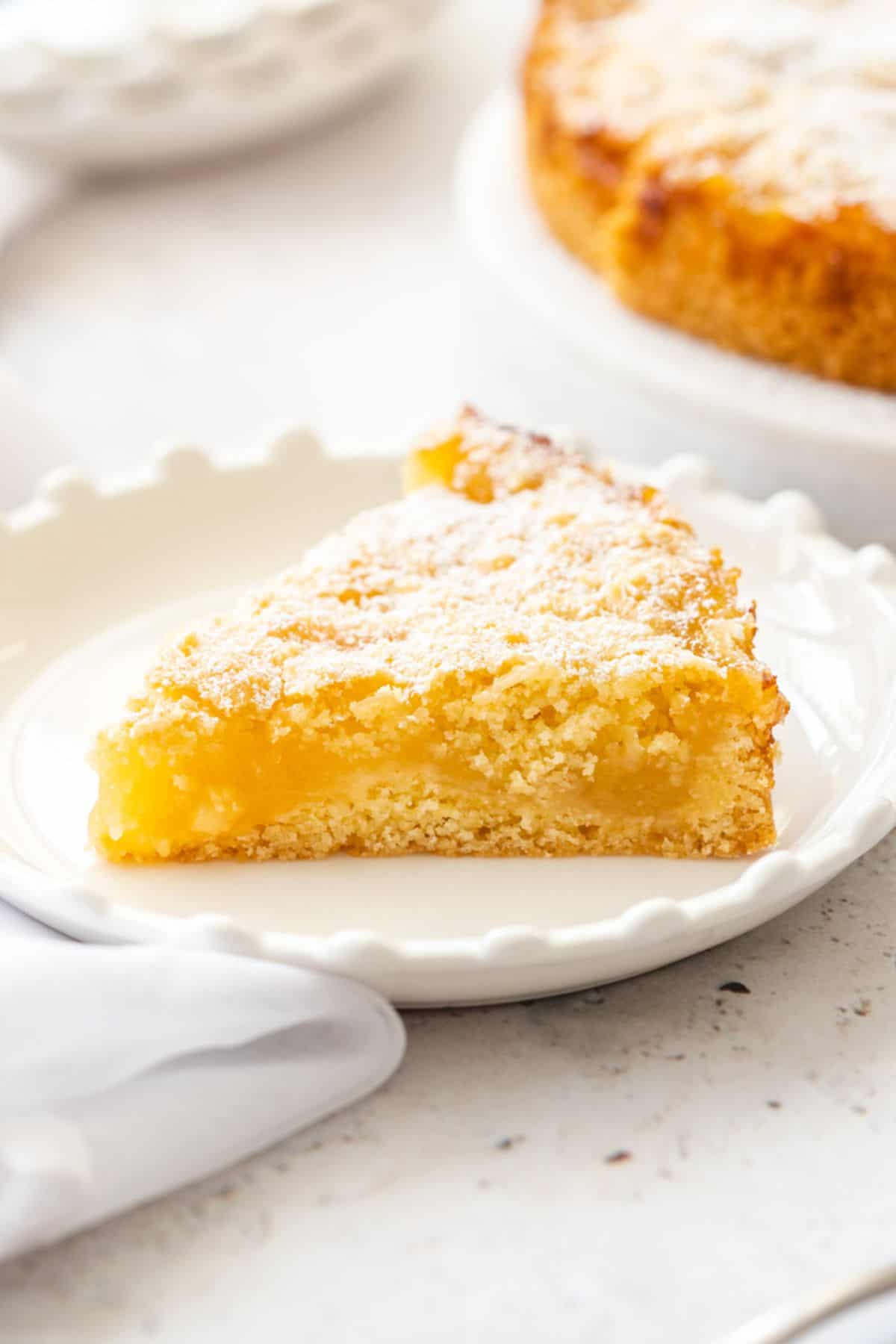
Serving suggestions:
This lovely cake is ideal for morning or afternoon tea served with coffee or tea.
It is sufficiently elegant to serve as dessert with whipped cream or our No-Churn Vanilla Ice Cream.
Take the cake to a potluck, or gift one to a friend. It will be very welcome and gratefully received.
This simple, easily made Lemon Curd Cake looks especially lovely when presented on a pretty platter. It has the perfect blend of sweet and tangy flavours and is certain to become one of your favourites.
I look forward to hearing if you make it – be sure to leave me a comment below.
Alex xx
More delicious recipes for you to try:
Stay in touch!
Follow me on Facebook, Pinterest and Instagram and subscribe to my newsletter.
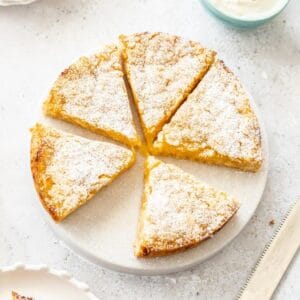
Lemon Curd Cake
Recipe Measurements:
For accuracy, when weights are provided, we recommend weighing your ingredients. This will produce the best results.
Ingredients
For the Cake:
- 1 cup (150 g) gluten-free all-purpose/plain flour See Note 1
- 2 teaspoon baking powder
- ½ cup (115 g) caster/superfine sugar
- ¼ cup (60 g) unsalted butter – at cool room temperature
- 1 large egg – lightly beaten, at room temperature
- icing/powdered sugar – for dusting
For the Lemon Curd Filling:
- ½ cup (120 ml) lemon juice – strained
- ½ cup (115 g) caster/superfine sugar
- 1 large egg – lightly beaten
- ¼ cup (60 g) unsalted butter – cut into cubes
Instructions
For the Cake:
- Preheat your oven to 180 Degrees C (355 F).Grease and line the base and sides of a 17 cm (6.5”) spring-form tin with non-stick baking paper.
- Add flour, sugar, butter and lightly beaten egg to the bowl of a food processor fitted with a steel blade.Pulse until the mixture just starts to come together.Don’t process until the mixture forms a ball of dough, you want it to still be a little crumbly.
- Tip the mixture onto some cling wrap. Gently bring it together then divide the mixture and press ⅔ into the base of the prepared tin, reserving the remaining ⅓ for the topping. To be accurate, I weighed the mixture. You can estimate it if you prefer.
- Make the lemon curd as per the instructions below. Pour the hot lemon curd onto the cake base.
- As evenly as possible, crumble the remaining mixture over the top of the curd. It will spread a little during baking.
- Bake until lightly golden brown – about 30 minutes.
- Remove from the oven and cool completely in the pan.Gluten-free baked goods are often fragile, so it is important that the cake is cooled before removing from the tin.
Lemon Curd Filling:
- Place all filling ingredients in a saucepan. (See Note 2)
- Over a low heat, stir until the butter has melted and the curd thickens, just below boiling point.Don’t be tempted to use high heat to make the process quicker; you will end up with scrambled egg.Remove from the heat and top the cake base.
Video
Notes
- Flour: we use a commercial all-purpose flour, made from a blend of naturally occurring gluten-free flours. Our gluten-free flour blends contain either xanthan or guar gum to stabilise and provide structure to our recipes. Regular all-purpose flour can be used if you do not require the recipe to be gluten-free. You can also make this recipe with self-raising flour and omit the baking powder.
- Making the curd: the curd is very simple to make. This curd does not require a double boiler as many recipes do. However, it does mean that you must cook it over a low heat. When making curd, the sweetness can vary depending on the acidity of the fruit. Before adding to the cake, taste your curd. If you find it too tart, add a little extra sugar.
- Lemon curd: I have also on occasion used my Homemade Lemon Curd in this recipe. You’ll need about ⅔ cup of curd.
- Serving: the cake is delicious served on its own, with some whipped cream or our No-Churn Vanilla Ice Cream.
- Storage: like many gluten-free baking recipes, the cake is best on the day it is baked. However, it will keep for up to 3 days stored in the fridge in an airtight container. If you prefer to freeze it, allow it to cool completely, and then wrap it twice in clingfilm to ensure it doesn’t suffer from freezer burn. The cake can be frozen for up to 2 months.
Nutrition Estimate:
Nutritional Disclaimer:
The nutritional information is an estimate only, and is derived from online calculators. For accurate results, we recommend calculating the nutritional information based on the ingredients and brands you use.
This post was originally published in November 2018 as Belgian Lemon Tea Cake. It has been updated with new photos and more information. The recipe remains the same.



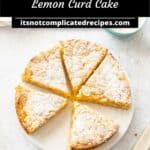

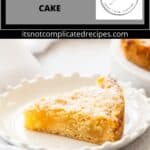
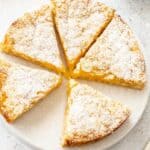

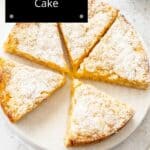



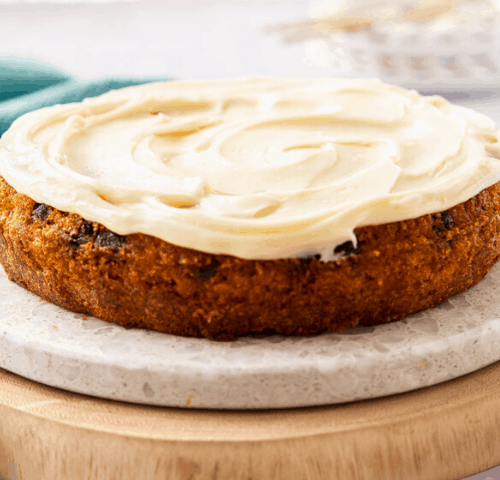

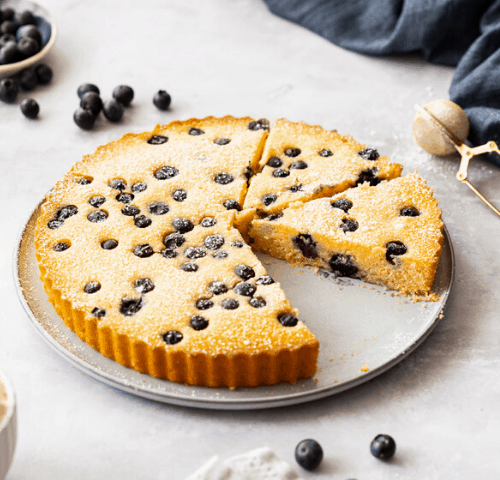
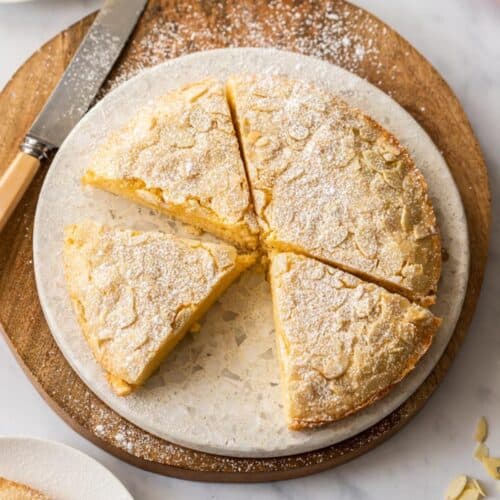
Leave a Comment